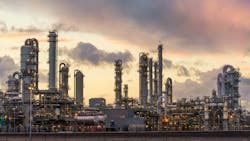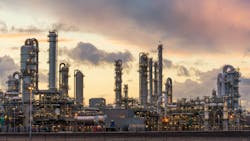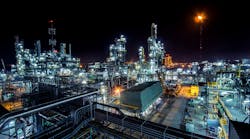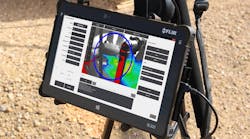Leaks in the oil and gas industry carry a high cost. According to the United States Environmental Protection Agency (EPA), methane is 25 times as effective as carbon dioxide at trapping heat in the atmosphere.[1] And over the last two centuries, concentrations have more than doubled. It is estimated to be responsible for a quarter of the warming we see in the world today.
But it is not just costing the earth; the costs to industry are also significant. Fugitive emissions account for a significant amount of methane getting into the atmosphere, and it is estimated that operators lose 2.3 percent of all gas extracted through leaks every year. In 2021, that cost the industry $19 billion. This year, it will be even higher.
Even without such a commercial driver, the impetus for industry to reduce this waste would be compelling. Governments around the world looking to drive toward net zero are toughening regulations on emissions generally — and leaks in the oil and gas industry specifically.
In the U.S., methane emissions are central to the EPA plan released last year to require operators to detect and repair leaks. The aim: To slash methane from oil and gas operations by almost three quarters from 2005 levels by 2035.[2] In the EU, meanwhile, the European Commission is also proposing to crack down — introducing penalties for leaks and potentially banning routine flaring and venting.[3]
More widely, The Global Methane Pledge launched by the EU and U.S. a year ago now has more than 100 countries signed up, committing to reduce global methane emissions by at least 30 percent from 2020 levels by 2030.
“To limit warming to 1.5 degrees C and avoid near-term tipping points, the world must rapidly reduce methane emissions in addition to decarbonizing the global energy sector,” the governments said in a joint statement announcing the pledge. Beyond governments, investors and the public are also increasingly pressuring companies to take the issue in hand.
A thankless task
Unfortunately, most emissions monitoring is not up to the task. Traditional approaches will increasingly struggle to meet government requirements or business needs as operators pursue their own carbon-reduction strategies. In fact, it barely copes with current compliance.
Existing leak detection and repair (LDAR) programs are usually manual, labor-intensive, costly and time-consuming. About 90 percent or more of fugitive emissions come from the flanges, pressure relief devices, valves and pumps that proliferate across upstream wells and downstream facilities. In an average refinery, for example, there may be more than 75,000 connectors and valves. A large facility can have more than 200,000 — all requiring checking on foot with wand-based sniffers.
The process is inefficient and potentially prone to errors. Perhaps more seriously, it has two significant consequences.
The first is that inspections are sporadic. The scale of the task and the expense and labor involved means many flanges are checked only annually — or whatever maximum interval regulation permits. This means that leaks can persist for months before detection, and that over-reporting emissions is common. In the absence of any proof to the contrary, when a leak is found, it must be assumed to have started immediately after the last inspection. As businesses seek to reassure stakeholders of their seriousness in tackling emissions, that has both commercial and reputational costs.
The second consequence is that, given the work is mainly manual and paper-based, the data gathered is rarely used effectively. The lack of digitized work processes makes it difficult to analyze, manage audits or track trends.
While there is increasing pressure to detect and address leaks more quickly, the only option for many would be to significantly increase headcounts for more regular rounds — in an environment where both labor shortages and competitive pressures argue for the opposite. In most cases, it is impractical. Instead, operators choose to bear the emissions costs and opportunities lost.
But that does not need to be the case.
Finding a better way
There have been some attempts to address the weaknesses of traditional LDAR programs. Cameras with gas cloud imaging set on drones or even aircraft or satellites can be used to capture methane emissions more regularly. But they cannot pinpoint the sources of a leak, which remains a labor-intensive task.
Honeywell, for instance, has developed a real-time methane monitoring solution based on cost-effective wireless sensors. Low-energy sensors that cover more plant areas than traditional detectors provide a far more efficient and powerful solution that offers a wide range of benefits.
First, and most obviously, it enables operators to quickly detect leaks and identify their source, eliminating the costly and time-consuming manual labor. Operators can use the information to prioritize repairs, address the worst leaks first and avoid downtime. In upstream and midstream operations, automated quantification of emissions and user-configurable alarms can immediately alert operators to critical product losses at remote and unmanned locations. Downstream, in refineries and chemical plants, automated emissions monitoring can rapidly locate and quantify the source of leaks to improve maintenance efficiency.
Crucially, it also captures and digitizes the data to enable not only accurate and easy reporting and audits, but analysis to identify trends and optimize operations. That can help identify design issues and other problems leading to leaks and ultimately shift the LDAR from a reactive to a proactive stance. In the future, the data could help drive predictive maintenance regimes.
Beyond leaks, closer monitoring and analysis could identify the operational issues resulting in higher levels of flaring and venting — the much greater contributor to methane emissions. Many sites today simply have no way of measuring their venting emissions.
And this is perhaps the most important point: With an enterprise-level, near-real-time view across all sources, the solution provides real visibility and transparency for emissions data. That is important for regulatory reporting and public accountability. But it is also a crucial driver for businesses’ own emission reduction strategies. It finally enables them to determine a baseline and benchmark for emissions data against which to set targets, measure their progress and provide evidence of success.
Many operators’ road to emissions reduction will be long and potentially challenging. However, if you do not know where you’re starting from, it is much harder to get where you want to go.
[1] https://www.epa.gov/gmi/importance-methane#:~:text=Methane%20is%20the%20second%20most,trapping%20heat%20in%20the%20atmosphere.
[2] https://www.reuters.com/business/environment/us-unveils-crackdown-methane-starting-with-oil-gas-rules-2021-11-02/
[3] https://www.euractiv.com/section/energy/news/leak-draft-eu-law-cracks-down-on-methane-leaks-from-fossil-fuels/
Adrian Fielding is the GM for emissions control and reduction at Honeywell Process Solutions and is responsible for driving the overall strategy and development of this initiative. Adrian has been with Honeywell for over 15 years and before his current role, Adrian was responsible for the overall strategy of the safety and security business related to the digital transformation within HPS.
Honeywell Process Solutions



